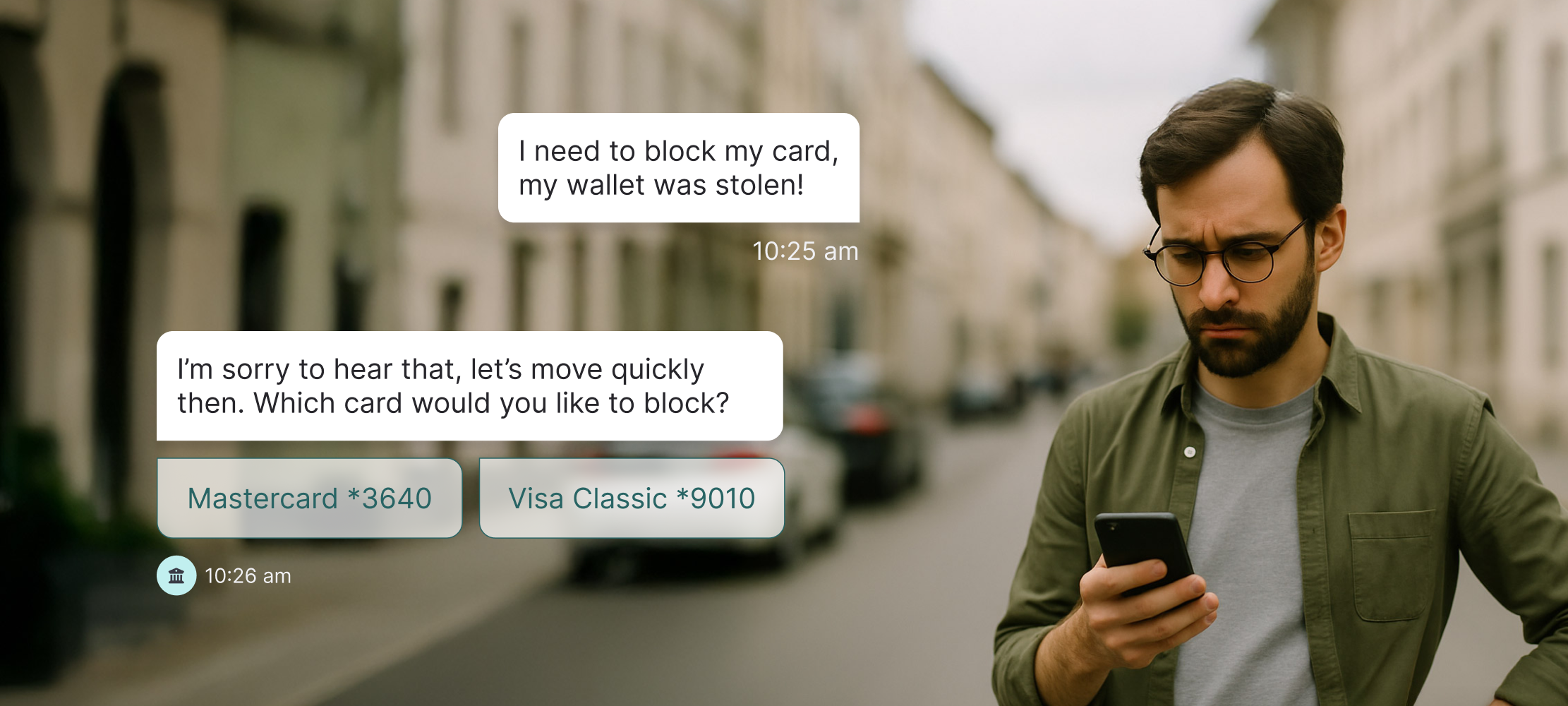One of the most common questions we get from our clients is how their bot will know when to transfer a client to a representative. They have concerns about the chatbot human handoff seeming unnatural to their customers. It's a valid concern; it's not so easy to create a seamless transition, and only a handful of tools do it well.

Luckily, Hubtype is one of the few frameworks that successfully manages this challenge with chatbot human handoffs. Regardless of the type of chatbot that the business is using, we help reduce friction with human handovers.
Different handoff tactics for different bots
Most chatbots are either rule-based or artificial intelligence bots.
When it comes to rule-based bots, the transfer from a bot to an agent is generally easier than one with an AI bot. Rule-based chatbots use buttons and carousels that offer a clear menu of operations that the bot can perform.
If the customer wishes to do something that is not displayed within those options, there is also a button available to transfer over to a live agent.
This process is straightforward. The customer is aware of the limitations of the chatbot human handoff and controls when the chatbot-human handoff happens.
When the handoff occurs, the bot transfers over the information which was collected from the user at the start of their interaction. Thus, the agent begins with a clear picture of who the customer is and what they need.
Chatbot human handoff for AI chatbots
On the other hand, AI chatbots interpret the meaning of customer questions. This usually takes place in the form of a text exchange and gives the user more freedom to ask a variety of questions.
In this case, the chatbot human handoff takes a little more intelligence from the bot. AI bots use scenario-driven transfers and natural language analysis to decide when to transfer the conversation to a human agent.
Scenario-driven transfers
With scenario-driven transfers, the bot analyses requests by running them through a library of programmed capabilities. If it finds that it can handle the request, it will proceed with doing so.
If the bot concludes that it cannot fulfil the needs of the customer, or if the bot doesn't understand the request, it will connect the customer to a live agent.
Again, the transfer will contain the information from the beginning of the interaction. The agent is then aware of the scenario they are handed, and the chatbot human handoff is seamless.
Transfers triggered by natural language analysis
AI-enabled bots can also analyse natural language and sentiment. When the AI bot is trained to understand verbal cues, it is able to interpret a customer's frustration and pass them through to an agent.
Even though AI bots solve more challenging issues presented by the user, there's also more room for misinterpretation. The chatbot human handoff has more problem-solving responsibility as opposed to following a decision-tree solution through user-driven menus.
Be seamless, but transparent
Regardless of which chatbot you're using, it will seamlessly pick up wherever it can solve queries and work well with your team. And, it shouldn't only happen once. The chatbot human handoff should happen at least twice in a conversation.
For example, the bot starts then passes to human, the human closes the case and passes back to the bot. When a human agent marks a case as closed, the chatbot picks the conversation back up to follow up on how satisfied the customer was with their interaction.
Also, it's important to be clear and transparent with your customers. Make it known when your customers are chatting with a bot or a human. There is no need to hide this when the service quality is consistently high. Customers are less concerned with who (or what) is helping them and more about getting their questions answered.
Tools for managing the chatbot human handoff
Hubtype Desk, our dashboard, makes handling the transitions between chatbot and humans easy. Hubtype Desk is a CRM system that integrates perfectly with our bots to seamlessly handle the human handoff. It consolidates conversations from messaging apps, making it easy to connect with customers on their preferred channels.
With Hubtype Desk, you'll be able to make sure every issue gets resolved with our powerful ticketing tool. The shared inbox lets your team collaborate and resolve issues without getting in each other’s way.
Want to reduce friction in customer service? Hubtype will help you create a bot that provides a seamless chatbot human handoff. Book a call with us, today.










.jpg)
